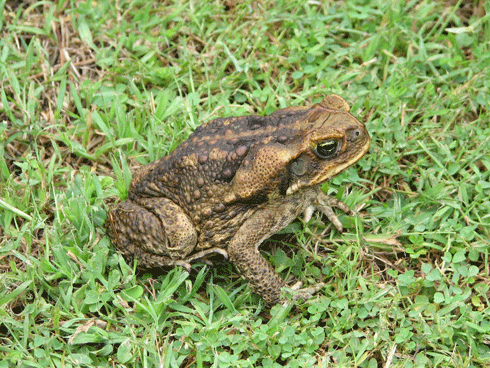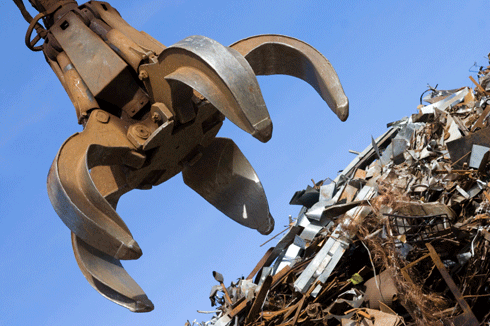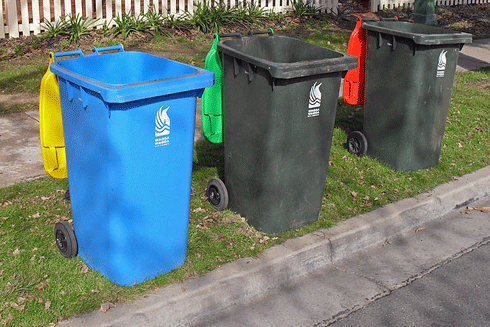
|
Published: 7 January 2013
Islands are assets for biodiversity conservation
A major exercise to assess the biodiversity and ecological security of our offshore islands has identified their importance in helping minimise the impact of pests – such as cane toads – on Australia’s biodiversity.
Australia’s islands are diverse in their form and character. Under a recent initiative of the Australian Government’s Department of Sustainability, Environment, Water, Population and Communities, researchers catalogued more than 8000 islands in Australian waters, almost half larger than one hectare.
The rich biodiversity of these islands is difficult to adequately protect due to a number of factors. These include the sheer number of islands, the different types of tenure, the challenges of accessing and working on many of them, and overall limitations on resources.
Many islands host endemic sub-species of mainland animals. They also provide a refuge for populations of native species once widespread on the mainland, but now extinct or in decline, as a result of factors that include predation by feral animals such as exotic rats, foxes, cats and pigs, competition from rabbits and goats, or poisoning from eating cane toads.1
The Australian Government’s Offshore Island Initiative assessed the presence of feral and invasive animals on all islands larger than 20 hectares, determined the key elements of the natural biodiversity on all islands larger than 200 hectares, and used this information to define 100 priority islands of high conservation status.2
These findings are useful when developing ways to protect island populations of key native predator species at risk from the spread of cane toads across northern Australia. The Australian Government’s cane toad Threat Abatement Plan (TAP) notes that: ‘Neither the technologies nor the resources required to contain and eradicate cane toad numbers on a continental scale are available’. A key objective of the TAP is finding ways to ‘reduce the impact of cane toads on populations of priority native species and ecological communities’.

|
|
Cane toads have now colonised much of northern Australia, affecting many endemic species. Credit:
David Dall / Australian Pest Animal Strategy
|
The Offshore Islands database has enabled the identification and description of important communities of threatened – mostly predatory – species on 99 islands off northern Australian coasts, with some of the most significant found off the Northern Territory’s Arnhem Coast.
Closer inspection of just two of these islands – Groote Eylandt and Marchinbar Island – reveals a range of similarities and differences between the two, and illustrates the general importance of islands as assets for biodiversity conservation.
Both islands are Aboriginal-owned under the Aboriginal Land Rights (NT) Act and the rights of their traditional owners are recognised. Those traditional owners thus decide what conservation activities should take place on their land, and conservation planning is undertaken with the relevant communities.
Groote Eylandt is the largest of a group of about 40 islands, approximately 40 km from the mainland in the Gulf of Carpentaria. With an area of almost 230,000 hectares, it is the third largest offshore Australian island, after Melville Island in the Northern Territory and Kangaroo Island in South Australia.
Groote Eylandt has a population of about 1000 people and a major manganese mining operation. As a consequence, the island is subject to a continual stream of traffic, both people and cargo.
It also hosts a diversity of high-quality forest, woodland, vine thicket, heathland and swamp ecosystems, and is inhabited by at least 12 important reptile and mammal predator species. These include an abundant natural population of the northern quoll, Dasyurus hallucatus, which is listed as critically endangered in the Northern Territory and may have been lost from the Northern Territory mainland as a result of cane toad colonisation. As well, Groote Eylandt is home to Merten’s water monitor (Varanus metensi) and the yellow-spotted monitor (Varanus panoptes panoptes), both of which are listed as vulnerable in the Northern Territory.
The Anindilyakwa Rangers were established in 2002 to help protect the Groote Eylandt archipelago’s unique natural and cultural values. In 2006, the islands in the archipelago were declared as the Anindilyakwa Indigenous Protected Area (IPA), which has a management plan that prioritises the most important values for protection and management from the perspective of the traditional owners.
In contrast, the much smaller Marchinbar Island – around 21,000 hectares in size – is found at the extreme north-eastern end of the chain of islands that form the Wessel Islands Group in Arnhem Land, and is only 2 km from the closest member of that group, Guluwuru Island.
Marchinbar has a small human population centred on a family outstation, with relatively low rates of outside visitation and material contact. The island also has natural populations of the northern quoll and has the only natural population in the Northern Territory of the mainland golden bandicoot (Isoodon auratus auratus), which is listed as vulnerable under the Environment Protection and Biodiversity Conservation (EPBC) Act.

|
|
Among the native predators threatened by the spread of cane toads is the northern quoll, Dasyurus hallucatus, a type of native cat. Now absent from many parts of the mainland, they have been listed as endangered under the EPBC Act (although it is listed as near-threatened by the IUCN). Surviving natural populations are found on Groote Eylandt and Marchinbar island. Credit:
Wildlife Explorer/Wikimedia Commons licensed under Creative Commons CC BY 3.0
|
Potential risks and invasion routes of pest animals – such as cane toads, which are currently not present on either island – are quite different for the two islands. For Groote Eylandt, the major risk is through ‘stowaway’ toads in cargo and luggage; for Marchinbar, the greatest risk is from natural invasion by a process of ‘island-hopping’.
Not surprisingly, the approaches adopted by the traditional owners and agencies responsible for managing the islands’ environments and biodiversity reflect the different nature of the risks.
The traditional owners of two islands adjacent to Marchinbar Island have built their capacity to monitor and manage biodiversity through a project to relocate mainland populations of the northern quoll to the islands. This has led to development of a community ranger program, the Gumurr Marthakal Rangers, who now focus on land and sea management issues throughout the island group. Both the Gumurr Marthakal Rangers and the Anindilyakwa Rangers are supported by the Australian Government’s Working on Country Program.
Marchinbar Island is within a consultation area for the proposed Marthakal IPA, which encompasses islands of the Elcho, Wessels and English Company groups. A draft management plan for the proposed IPA locates Marchinbar Island within a specific management zone and recognises that although cane toads – and other pests such as black rats and feral cats – are not known to be on these islands, there is a constant threat of their invasion.
The plan includes activities to ‘guard against establishment of cane toads’ and other pests on these outer islands, primarily through annual inspections including ‘listen and look’ searches at freshwater sources on the islands.
On Groote Eylandt, the continual movement of people and goods significantly increases the risk of arrival of cane toads as well as other pests. In a novel and important site-based approach, a sniffer dog searches freight that is brought into the island from the mainland. At the same time, a cane toad awareness program aims to maximise the likelihood of toads that get past frontline defences are recognised, captured and destroyed.
There are many other site-based approaches that can be – and are being – used to manage risks to key assets from invasion by cane toads and other pests. As we have described here, activities supported and delivered by a range of stakeholders can achieve outcomes that help to protect Australia’s biodiversity from the negative impacts of pest animals, such as the devastating cane toad.
More information:
Feral animals on offshore islands, http://www.environment.gov.au/biodiversity/invasive/ferals/islands/index.html
Prioritisation of offshore island assets, http://www.environment.gov.au/biodiversity/invasive/publications/offshore-islands.html
Australian Pest Animal Strategy, http://www.apas.net.au/
1 Australian governments have developed the Australian Pest Animal Strategy (http://www.apas.net.au/) to help address the impacts of existing animal pests, and prevent establishment of new ones. The strategy identifies the importance of key environmental assets, such as offshore islands, and supports the development and delivery of targeted approaches to help maintain their endemic biodiversity.
2 See the report: Prioritisation of high conservation status offshore islands






